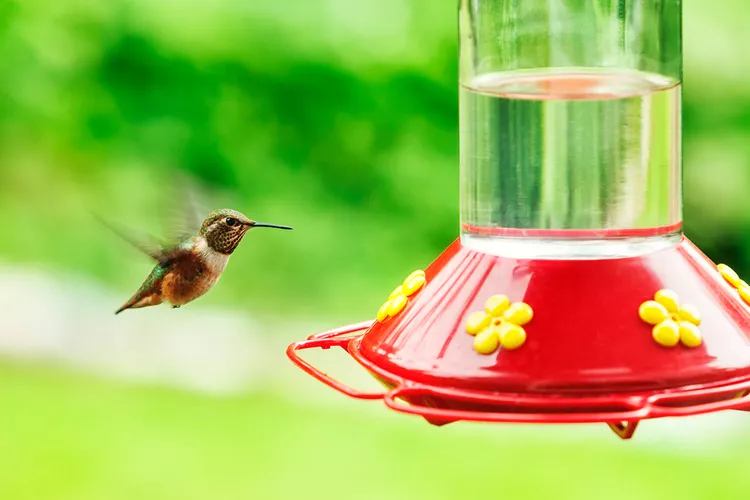- Working Time: 30 minutes
- Total Time: 1 hour
- Skill Level: Beginner
- Estimated Cost: $15
Hummingbirds are colorful and exciting to see in your garden; these tiny birds are also important pollinators. Putting out a hummingbird feeder is an excellent way to attract and support these winged wonders, as long as you know how to clean a hummingbird feeder correctly.
"The rule of thumb is to discard the nectar, clean, and refill the feeder every two days. Otherwise, there's a risk of poisoning the birds," warns Ronnie Collins, a botanist, and founder of the blog Electro Garden Tools.
Daniel McCurry, owner of Father Nature Landscapes in Birmingham, Alabama, says you should discard the nectar and clean the feeder whenever the liquid appears cloudy or milky. "The higher the humidity, the faster [the nectar] goes bad for them," McCurry explains. "When it becomes milky, it makes it taste funky for the birds, and they'll move on to someone else's garden." Plus, "the mold that can grow in the hummingbird's water can cause them to get a fungal infection," he adds.
What You'll Need
Equipment / Tools
- Bottle brush
- Dish sponge (optional)
- Microfiber towel
Materials
- Hot water
- Dish soap (glass feeder)
- White vinegar (plastic feeder)
- Cool water
Instructions
How to Clean a Hummingbird Feeder
Follow these steps to clean a hummingbird feeder and keep birds safe and healthy.
-
Empty the Feeder
"It's prohibited to reuse nectar as it spoils quite quickly, especially when it's warm outside," Collins says. "Flush the container with hot water after emptying it to remove the spoiled leftovers."
-
Take Apart the Feeder
Collins says it's easier to cleanse the contraption once it's dissembled. Plus, your feeder will get a much more thorough cleaning this way.
-
Clean the Feeder
Soak your feeder parts to help loosen the residue. "If you have a glass feeder, use hot water and dish soap ($19, The Home Depot) and swirl," McCurry says. "If you have a plastic (or unknown) feeder, use white vinegar ($3, Walmart) and rinse with cool water."
-
Scrub All Parts
Using a bottle brush ($3, Walmart) or dish sponge ($3, The Home Depot), remove the residue and mold from each part of the feeder. Then, rinse the feeder well with cold water. "If you clean it like this every two days, every next cleanup will be simpler than the previous," Collins adds.
-
Dry Thoroughly
Use a microfiber towel (6 for $16, Walmart) to soak up all of the excess moisture from cleaning. "When the feeder is dry, reassemble, refill, put it back, and enjoy the company of the happy hummingbirds in your garden!" Collins says.




















